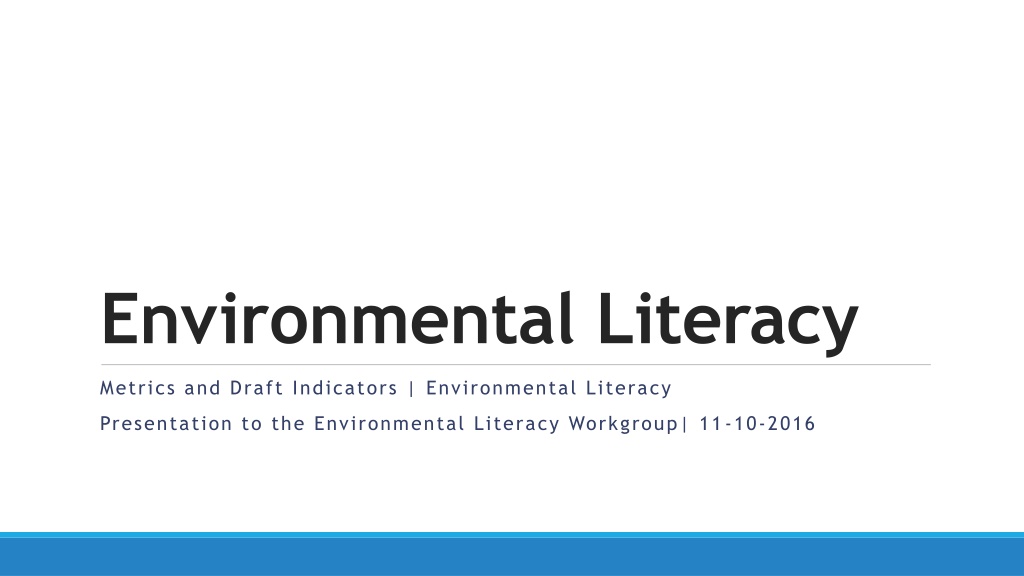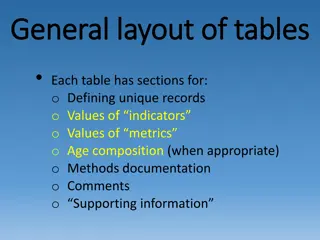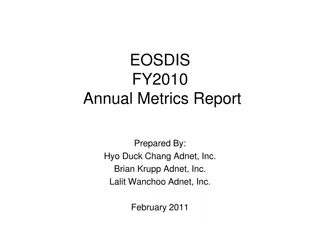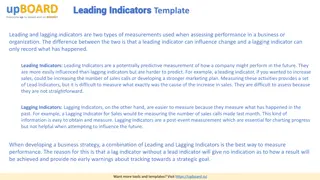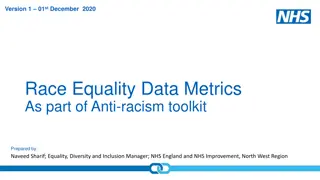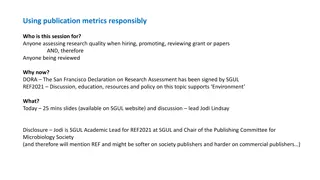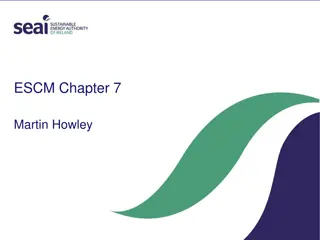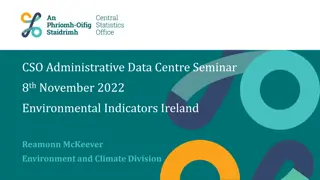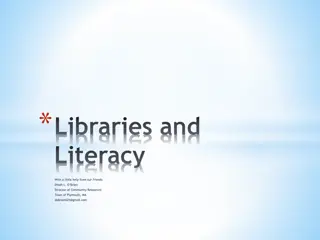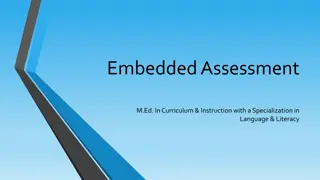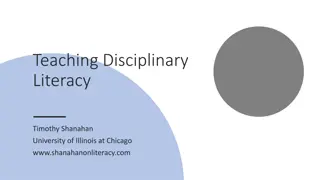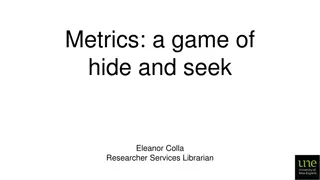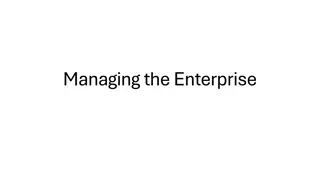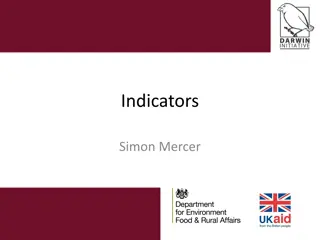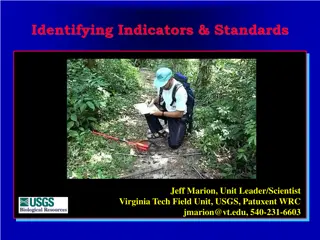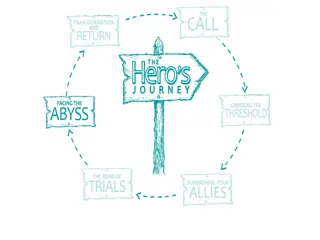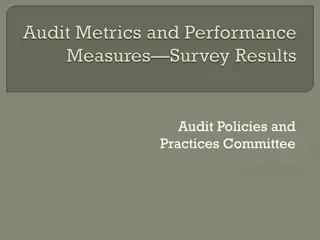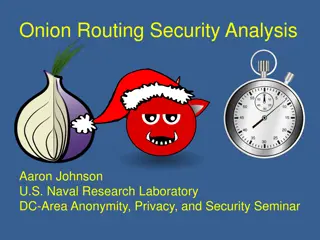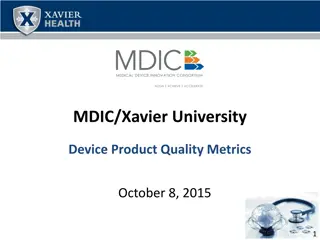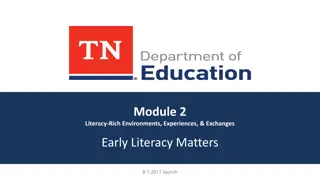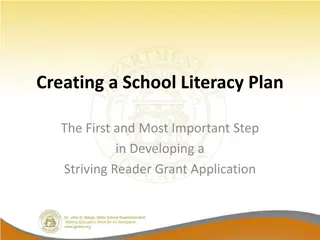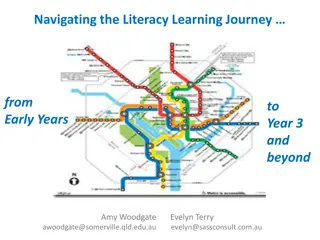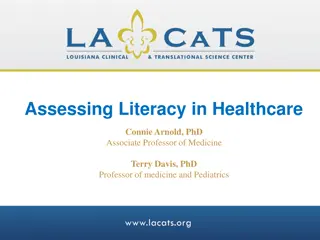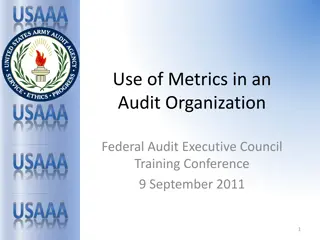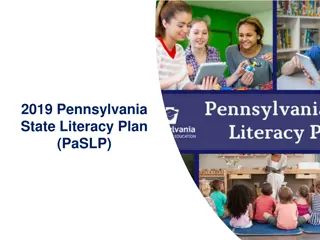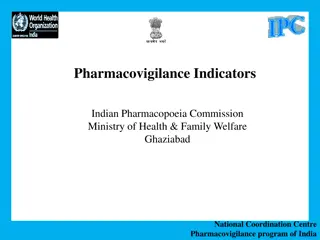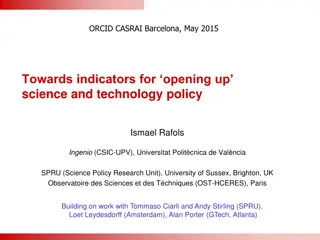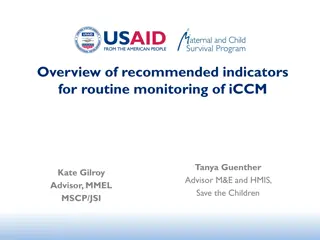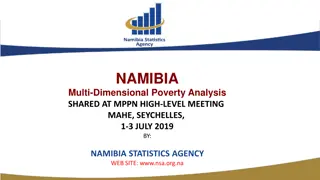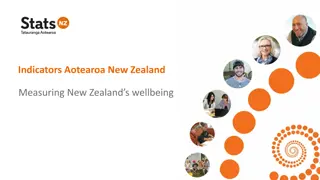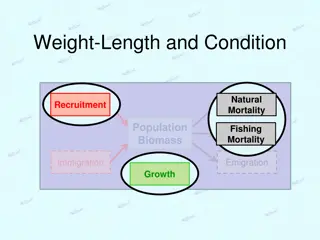Environmental Literacy Metrics and Indicators Presentation
Presentation on environmental literacy metrics and draft indicators discussed in a meeting with the Environmental Literacy Workgroup. Includes results from surveys on preparedness for environmental education, implementation of MWEEs, and sustainability in school systems. Also covers response rates, school district preparedness, MWEEs in elementary and middle schools, and comparisons between well-prepared, somewhat prepared, and not prepared LEAs.
Download Presentation

Please find below an Image/Link to download the presentation.
The content on the website is provided AS IS for your information and personal use only. It may not be sold, licensed, or shared on other websites without obtaining consent from the author. Download presentation by click this link. If you encounter any issues during the download, it is possible that the publisher has removed the file from their server.
E N D
Presentation Transcript
Environmental Literacy Metrics and Draft Indicators | Environmental Literacy Presentation to the Environmental Literacy Workgroup| 11-10-2016
Environmental Literacy Indicator Tool School System level survey that measured: 1. Degree of preparedness to provide Environmental Education 2. Extent to which MWEEs are provided to students in elementary, middle, and high schools 3. Number of sustainable schools and capacity to support them Note: Results based only on survey respondents and the # of responses to each question
ELIT: Response Rate Survey Response Rate # of Surveys Returned # of Distributed Surveys Response Rate State DC DE MD PA VA WV 2 2 100% 49% 100% 20% 78% 4% 19 24 99 105 39 24 500 135 55 2
ELIT: School district Preparedness LEA Preparedness to Implement Environmental Education 100% 80% 60% 40% 20% 0% DC DE MD PA VA WV All Well Prepared Somewhat Prepared Not Prepared
ELIT: School District Preparedness (cont.) Environmental Literacy Planning - Comparison of Well Prepared , Somewhat Prepared , and Not Prepared LEAs LEAs Well Prepared (Score 10-14) LEAs Somewhat Prepared (Score 5-9) LEAs Not Prepared (Score 0-4) Fully In Place Partially In Place Not In Place No Partially In Place Not In Place No Fully In Place Partially In Place Not In Place No Category Answer Fully In Place Answer Answer Estab. Leader 95% 0% 5% 0% 48% 0% 52% 0% 5% 0% 95% 0% Estab. Team 43% 53% 5% 0% 1% 54% 45% 0% 0% 10% 90% 0% Prof. Devl. 55% 45% 0% 0% 4% 85% 11% 0% 1% 45% 54% 0% Integ. Prog. 45% 55% 0% 0% 9% 90% 1% 0% 0% 65% 35% 0% Plan--MWEE Engag. 78% 23% 0% 0% 19% 70% 11% 0% 0% 41% 59% 0% Plan--Sust. Sch. 45% 53% 3% 0% 8% 58% 34% 0% 0% 31% 69% 0% Comm. Partnerships 85% 15% 0% 0% 29% 68% 3% 0% 2% 40% 57% 0%
ELIT: MWEEs in Elementary School Reporting LEAs that Provided MWEEs at Elementary Schools 100% 80% 60% 40% 20% 0% DC DE MD PA VA WV All Systemwide MWEE Some MWEE No Evidence
ELIT: MWEEs in Middle School Reporting LEAs that Provided MWEEs at Middle Schools 100% 80% 60% 40% 20% 0% DC DE MD PA VA WV All Systemwide MWEE Some MWEE No Evidence
ELIT: MWEEs in High School Reporting LEAs that Provided MWEEs at High Schools in Required Courses 100% 80% 60% 40% 20% 0% DC DE MD PA VA WV All Systemwide MWEE Some MWEE No Evidence
ELIT: MWEEs in High School Percent of MWEEs by Course Type 21% Science 2% Soc. Stud. English 5% Math 60% Other 12%
ELIT: Sustainable Schools Sustainable Schools by State 35% 30% 25% 20% 15% 10% 5% 0% DC DE MD PA VA WV All Elementary Middle High
Since its formation, the Chesapeake Bay Programhas been guided by science science- -based goals based goals. To assess our progress toward these goals, we track a range of environmental indicators indicators. Accurate data and open assessments ensure our work is transparent and allow our partners, stakeholders and oversight groups and oversight groups to hold us accountable hold us accountable for the work that we do. assess our progress range of environmental partners, stakeholders The Evolution Of Accountability At The Chesapeake Bay Program The Evolution Of Accountability At The Chesapeake Bay Program Chesapeakestat Chesapeakestat Website Website (emphasis added)
We use data and indicators to Assess our progress toward the goals of the 2014 Chesapeake Bay Watershed Agreement oEnvironmental Literacy Goal, with 3 Outcomes: Environmental Literacy Planning Student Sustainable Schools oVia Chesapeake Progress Make decisions about focus, resources, and effort oWithin the Chesapeake Bay Program oWithin individual jurisdictions
Indicator Updates are Based on data availability. Managed among Indicators Coordinator, Web Content Specialist, and Workgroup Chair or Coordinator. Governed by a specific Program-approved process. oEstablish communications plan oAssure data and Analysis & Methods documentation are up to date and accurate oDraft and review web content oNotify the CBP Management Board of update made Used to tell a story about our progress and our work.
The Chesapeake Bay Watershed Agreement Environmental Literacy Goal: Enable students in the region to graduate with the knowledge and skills needed to act responsibly to protect and restore their local watersheds. Environmental Literacy Outcomes: Sustainable Schools Environmental Literacy Planning Student
Sustainable Schools Outcome Outcome: Indicator: The number of certified sustainable elementary, middle and high schools in the Chesapeake Bay watershed, tracked by jurisdiction. US Green Ribbon Schools, MD Green Schools, VA Naturally, and Natural Wildlife Federation (NWF) Eco-Schools programs Baseline: Percentage of certified sustainable schools in the watershed Change Over Time: Total number (or percentage) of certified sustainable schools in each jurisdiction Continually increase the number of schools in the region that reduce the impact of their buildings and grounds on their local watershed, environment and human health through best practices, including student-led protection and restoration projects.
Environmental Literacy Planning Outcome Outcome: Indicator: The percentage of reporting Local Education Agencies that are Well or Somewhat Prepared to implement environmental education program(s). Based on ELIT data Baseline: Percentage of LEAs in each jurisdiction that are well-prepared, somewhat prepared and not at all prepared to implement environmental education program(s) Each participating Chesapeake Bay jurisdiction should develop a comprehensive and systemic approach to environmental literacy for all students in the region that includes policies, practices and voluntary metrics that support the environmental literacy goals and outcomes of the Watershed Agreement.
Student Outcome Outcome: Indicator: The number of students that receive MWEEs and/or the number of Local Education Agencies that provide MWEEs. Based on ELIT data Baseline 1: Percentage of students in each jurisdiction enrolled in schools that provide system-wide, some or no MWEEs Baseline 2: Percentage of LEAs in each jurisdiction that provide system-wide, some or no MWEEs Continually increase students age-appropriate understanding of the watershed through participation in teacher-supported meaningful watershed educational experiences and rigorous, inquiry-based instruction, with a target of at least one meaningful watershed educational experience in elementary, middle and high school depending on available resources.
Thanks! Questions? Laura Free| free.laura@epa.gov
